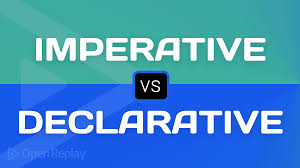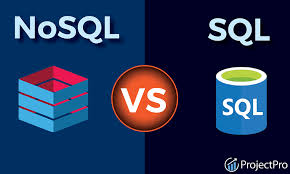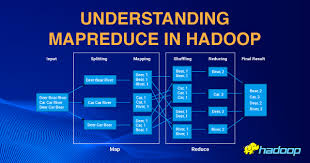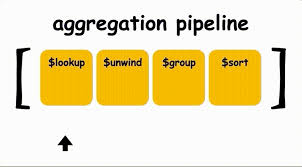comprehensive guide to Query Languages: SQL, NoSQL, and MapReduce 2024
Query languages are essential for retrieving, managing, and processing data in databases. Depending on the type of database and the use case, different query languages offer unique benefits.
This blog explores: ✅ Declarative vs. Imperative Queries
✅ SQL vs. NoSQL Queries
✅ MapReduce Querying
✅ Aggregation Pipelines in MongoDB
1. Declarative vs. Imperative Queries

When querying a database, you can use declarative or imperative approaches.
A. Declarative Query Languages (SQL)
- Describe the data needed, not how to get it.
- The database engine decides the execution strategy.
- More concise and readable.
- Parallelizable, making it faster on modern multi-core processors.
🔹 Example: SQL Query (Declarative)
sqlCopyEditSELECT * FROM animals WHERE family = 'Sharks';
✅ Advantages:
- Hides implementation details from users.
- The database optimizer chooses the best execution plan.
🚨 Limitation:
- Less control over execution details.
B. Imperative Query Languages
- Step-by-step instructions for retrieving data.
- Used in procedural languages like Python, Java.
- More complex but gives full control over execution.
🔹 Example: Imperative Query in Python
pythonCopyEditsharks = []
for animal in animals:
if animal.family == "Sharks":
sharks.append(animal)
✅ Advantages:
- More flexibility and control over how data is retrieved.
🚨 Limitations:
- Harder to optimize automatically.
- Difficult to parallelize across multiple cores or servers.
2. SQL vs. NoSQL Querying

SQL (Structured Query Language) is widely used in relational databases (MySQL, PostgreSQL), while NoSQL databases (MongoDB, CouchDB) use different query models.
A. SQL Query Example
sqlCopyEditSELECT name, age FROM users WHERE country = 'USA';
- SQL retrieves data from structured tables.
- Uses Joins to relate data across tables.
B. NoSQL Query (MongoDB)
jsonCopyEditdb.users.find({ "country": "USA" }, { "name": 1, "age": 1 })
- MongoDB uses JSON-like queries for document databases.
- No need for Joins – data is embedded in documents.
✅ SQL Best For:
- Structured data with strict schemas.
- Banking, ERP, CRM systems.
✅ NoSQL Best For:
- Flexible schemas with unstructured data.
- Big Data, IoT, Real-time applications.
3. MapReduce Querying (Big Data Processing)

MapReduce is a parallel data processing model that processes data in two phases:
- Map Phase – Filters and transforms data.
- Reduce Phase – Aggregates results.
🔹 Example: Counting Shark Sightings in PostgreSQL (SQL)
sqlCopyEditSELECT MONTH(observed_at) AS month, SUM(count)
FROM observations
WHERE species_family = 'Sharks'
GROUP BY month;
🔹 Same Query Using MapReduce (MongoDB)
jsonCopyEditvar mapFunction = function() {
emit(this.observed_at.substring(0, 7), this.count);
};
var reduceFunction = function(key, values) {
return Array.sum(values);
};
db.observations.mapReduce(mapFunction, reduceFunction, { out: "shark_count" });
✅ Advantages of MapReduce:
- Scales across multiple servers.
- Works well for large-scale data analytics.
🚨 Challenges:
- Requires writing separate Map and Reduce functions.
- Harder than writing a single SQL query.
4. Aggregation Pipelines in MongoDB

To improve usability, MongoDB introduced Aggregation Pipelines – a declarative query language similar to SQL.
🔹 Example: Aggregating Shark Sightings in MongoDB
jsonCopyEditdb.observations.aggregate([
{ $match: { "species_family": "Sharks" } },
{ $group: { _id: { $substr: ["$observed_at", 0, 7] }, total: { $sum: "$count" } } }
])
✅ Why Use Aggregation Pipelines?
- More readable and easier to write than MapReduce.
- Faster execution, optimized internally by MongoDB.
🚨 Limitation:
- Less flexible than full MapReduce for custom logic.
5. Query Language Evolution: SQL vs. NoSQL vs. MapReduce
| Feature | SQL (Declarative) | NoSQL (JSON-based) | MapReduce (Distributed) |
|---|---|---|---|
| Data Model | Structured (Tables) | Document-based | Key-Value or Document |
| Query Style | Declarative (SQL) | JSON Query Language | Imperative (Map/Reduce) |
| Best Use Case | Structured Data | Flexible Schemas | Big Data Processing |
| Performance | Optimized by DB engine | Fast for reads, scales horizontally | Slow but highly scalable |
✅ When to Use Each:
- SQL: Best for structured, relational data (Banking, CRM).
- NoSQL: Best for dynamic, JSON-based storage (Social Media, IoT).
- MapReduce: Best for large-scale data analytics (Big Data, AI).
6. Best Practices for Query Optimization
✅ Use Indexes to speed up lookups in SQL and NoSQL.
✅ Optimize Queries using .explain() to analyze performance.
✅ Use Aggregation Pipelines instead of MapReduce for faster execution in MongoDB.
✅ Partition Data to distribute workloads efficiently.
✅ Cache Frequent Queries using Redis or in-memory solutions.
7. Final Thoughts
The right query language depends on data structure, scalability needs, and processing speed.
💡 Which query language do you prefer – SQL, NoSQL, or MapReduce? Let us know in the comments! 🚀